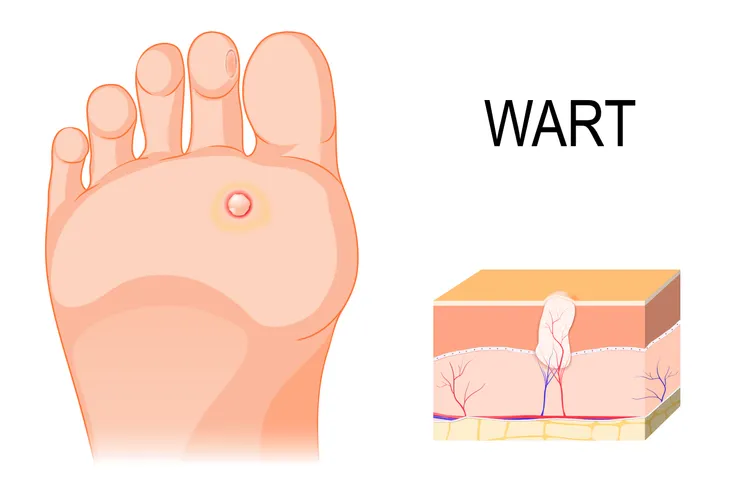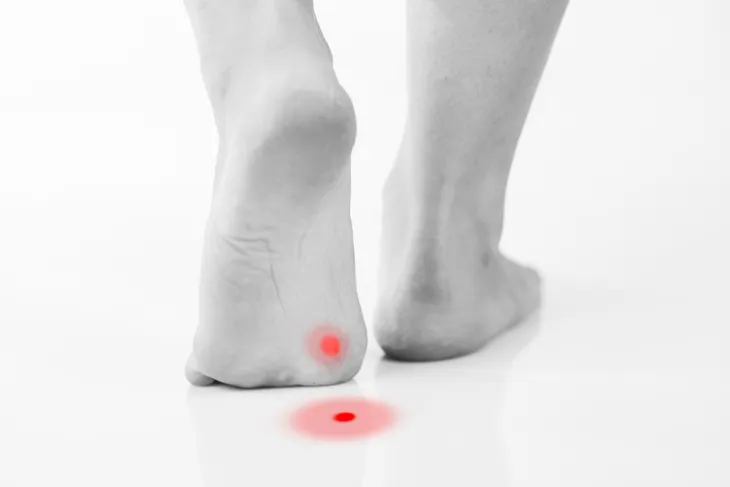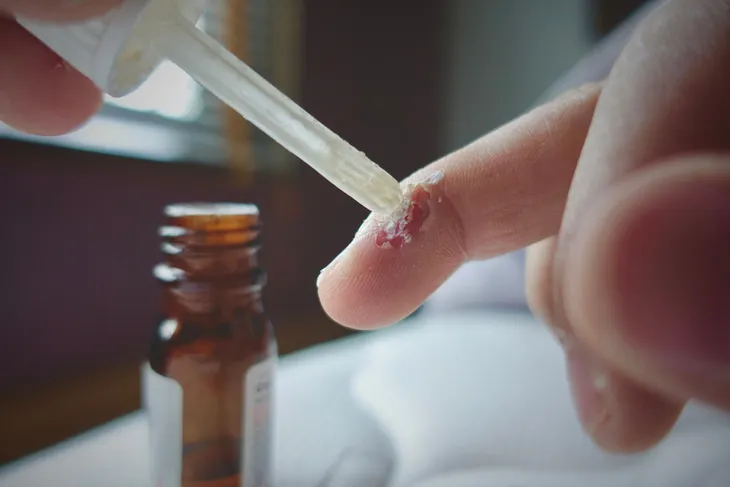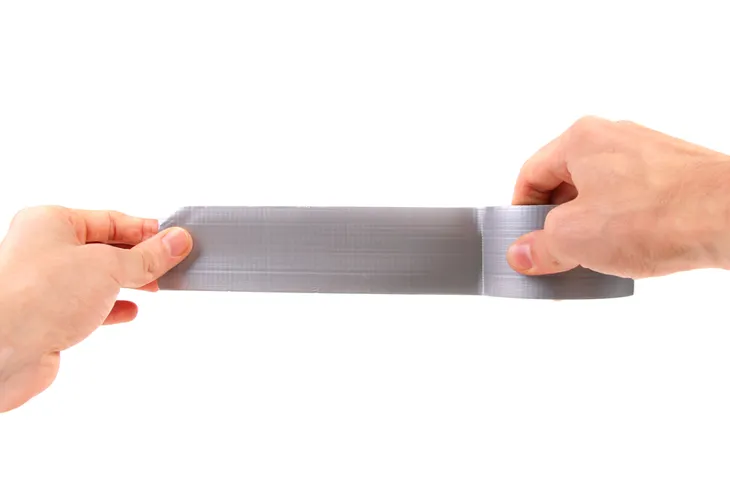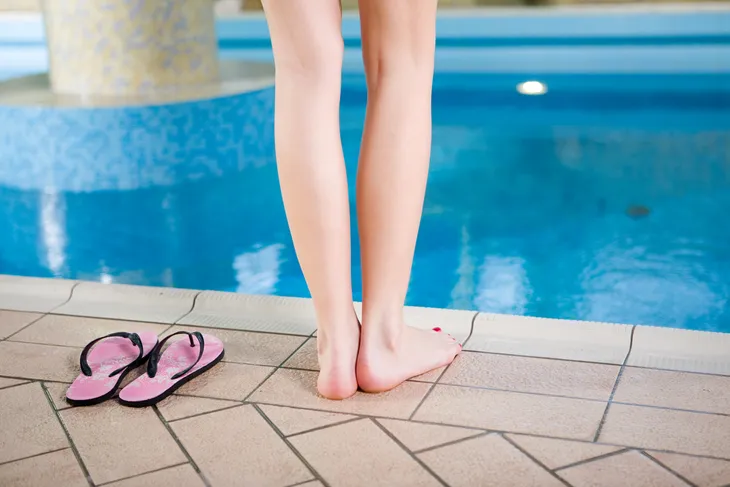While warts are embarrassing and sometimes even painful, they aren’t all that uncommon, particularly among children and teenagers. Most people have experienced one at some point or another, usually as a child as they are commonly passed along in communal areas like schools and locker rooms. Thankfully most warts, including plantar warts which occur on the foot, are relatively harmless, but they do have the power to make us feel very self conscious.
So what can be done about plantar warts and how do we avoid them? Let’s learn about what causes them and the best forms of treatment available…
What are Plantar Warts?
Before we dive into the specifics, let’s first define what a plantar wart is. Health.com points out that the word “plantar” means “bottom surface” and refers to the fact that they appear on the bottom of the foot. Usually in a weight-bearing area like the heels, but they can also occur on top of the foot. They are caused by a viral infection in the top layer of the skin, explains WebMD.
Anyone who has a plantar wart will know because they look like a fleshy, abnormal (noncancerous) growth that can also appear grainy with black pinpoints which are sometimes referred to as wart seeds, but they are actually clotted blood vessels, says the Mayo Clinic. Because they grow in weight-bearing areas of the foot, they tend to grow inward underneath a thick layer of callus skin. “Most plantar warts aren’t a serious health concern and usually go away without treatment,” writes the source.
Caused by a Virus
As we previously mentioned, a plantar wart is caused by a viral infection. The strain of virus that is responsible for these warts is the human papillomavirus or HPV. People tend to get a little freaked out by this, but the Mayo Clinic notes that this particular virus is extremely common and there are more than a 100 different kinds in existence. However, only a few of them result in a wart on the foot. Other types will cause warts on other areas of the skin or mucous membranes.
Where is the Virus Picked Up?
The HPV virus that is often spread when your skin barrier is compromised and comes into contact with viral particles. Not everyone that comes in contact with this virus will end up with a wart, it depends on their immune system, says the Mayo Clinic. It also notes that people from the same family can even react differently.
While the virus isn’t easily passed between people, it thrives in “warm, moist environments. Consequently, you may contract the virus by walking barefoot around swimming pools or locker rooms. If the virus spreads from the first site of infection, more warts may appear.” WebMD also notes that the transmission of warts doesn’t have to be through direct contact. It can occur if a child with a wart touches a playground surface, then another child comes along and touches that same surface. In a swimming pool environment, they can spread if people don’t wear shoes in the shower, but the source says that the overall risk is low.
While we mentioned that not every person who comes in contact with the virus will develop a wart, there are people who are more at risk. According to the Mayo Clinic, a wart is more likely to affect children and teenagers, people with weak immune systems, people who have had plantar warts before, and people who walk barefoot in areas like a locker room or swimming pool.
Treatment
They Sometimes Go Away on Their Own
According to WebMD, plantar warts that are left alone will often go away on their own without treatment, but it can take up to two years. If they are bothering you, you can take matters into your own hands by using over-the-counter medication, a visit to the doctor to receive cryotherapy, or using one of the many home remedies. Unfortunately, foot warts like plantar warts, can be challenging to treat because of where they often lie beneath the skin surface.
WebMD warns that even if a treatment seems to be working and is successful, the wart can return. The source also advises that if the wart is not bothering you, the best option is to sometimes just leave it alone. It will disappear on it’s own time.
Over-The-Counter Medication
The over-the-counter medication available to treat a plantar wart is salicylic acid. It’s a type of beta hydroxy acid that is often used to treat acne, says Healthline. The salicylic acid works to remove dead skin cells and also creates an irrianted environment that stimulates your immune system to recognize and fight the virus. It can be bought as an ointment, cream or a liquid form. When used on a wart, they work to shed the skin away around the wart until it’s eventually cleared up. While this method is effective, it can take a long time until it’s fully treated. It can take several months.
Healthline advises following this treatment twice a day, every day. “It can also be helpful to prep the skin by soaking the affected area in warm water for 10 minutes before applying the acid.”
Duct Tape
This one probably sounds a little far fetched, but according to multiple sources including WebMD — it works! The source advises using a small strip of tape, putting it over the wart and leaving it for about six days. After about a week, you should remove the tape and soak the wart in water, “and then gently debride it with a pumice stone or emery board. Repeat the process many times until the wart is gone.” If you’re going this route just be warned that the treatment could take a couple of months. It isn’t a quick fix by any means. WebMD also notes that it probably doesn’t work any better than a placebo method.
Cryotherapy
Cryotherapy can only be received by a doctor. OTC cryotherapy treatments do not work as they are not cold enough. It’s the most effective form of treatment, but it can be painful. This doctor treatment involves freezing the wart off with liquid nitrogen (either with a spray or cotton swab) and then removing it with laser or surgery.
As previously stated, this can be painful, so the doctor might numb the area first, says the Mayo Clinic. “The chemical causes a blister to form around your wart, and the dead tissue sloughs off within a week or so. Cryotherapy may also stimulate your immune system to fight viral warts,” writes the source. You might need to return to the doctor’s office once a week for two to four weeks to have the treatment done over again until it disappears.
They can also inject the wart with medicine to strengthen the immune system so that our body can better fight off the virus and clear it up on its own.
How to Prevent Them
The first rule is to not pick at the wart. “If it’s on the bottom of the foot, try not to touch it with your hands, or pick at it, because you can very easily transfer the virus from the bottom of the foot to the surface of your hand,” says Alan Bass, DPM, a New Jersey-based podiatrist and spokesperson for the American Podiatric Medical Association to Health.com. You should also be careful not to spread the wart to other people. This is especially important for children. Parents who have a child with a wart should be careful to clean the bathtub carefully with a viral disinfectant to keep other people in the house safe and avoid sharing showers with another person, this goes for communal areas like a swimming pool.
In some cases, there’s nothing we can do to totally prevent warts, but there are things we can do to minimize our risk. Health.com writes, “avoid walking barefoot in public showers, locker rooms, and public pools, and instead wear sandals or flip-flops to protect your feet. Don’t share towels (remember, the virus likes a moist environment). If treating yourself to a pedicure, verify that salon tools are clean, and if you’re not comfortable asking how they sanitize their tools, just opt to bring your own.” If you’ve come in contact with someone who has a plantar wart, wash your hands and feet thoroughly.

